Tower Crane Cab: Cab features include improved seat position and access, a USB port, and optional Bluetooth. A user-friendly multifunction touch screen emits warning lights and sounds, as well as controls the interior temperature, interior, and exterior lighting, and other features. Sunblinds are provided for the side and front windows, and for the roof window on luffing jib cranes.
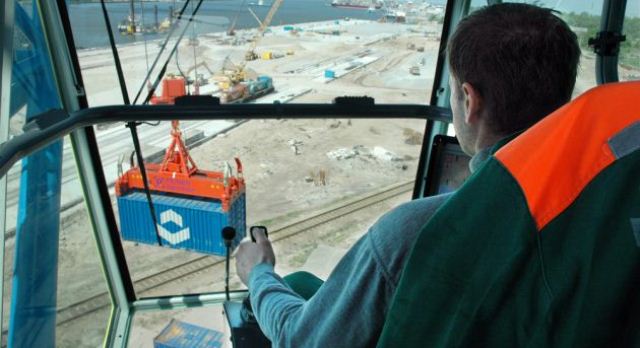
Cab cranes
Cranes with a horizontal or tilting boom, with a height under a hook equal to or greater than 35 m above the level of support, must have a cabin secured to the vertical rotating structure of the crane. (Except for cranes manufactured before 1990, which have a fixed cabin inside the structure).
Tower crane cab interior
Operator location:
The cabin must be designed so that the operator can control all the maneuvers from his work station, without having to place himself in a position of risk; The dimensions of this should be adequate to allow comfortable driving and correct visibility from the seat.
The interior height of the cabin must not be less than 1.90 m; the roof smooth and free of protruding elements. The windows must be constructed with glass or equivalent material, security. The front window must be equipped with a windshield wiper.

Cabin features
The cabins must comply with the ventilation requirements established in the current regulations. In the event that the crane is powered by an internal combustion engine, the necessary measures must be taken to prevent the exhaust gases from contaminating the cabin.
The control devices must remain visible in all circumstances. Exceptions are those cranes in which, for security reasons, it is advisable for the operator to be located in another place and the cranes commanded by remote control, from an operation station.
Cranes that are exempt from having a cabin, must have an operation position consisting of a platform, whose minimum dimensions are 1.50 max 1.50 m, also with a guardrail of 1 m minimum height.
The operation position can be located in the cabin, on the platform, or outside the crane, provided that it has good visibility, is easily accessible, is not reached by any mobile part of the crane, nor is there the possibility that it falls. Some elements from higher levels.
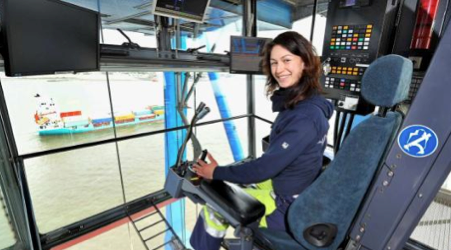
When the climatic conditions so advise, the cabin must be provided with an effective means of heating, which allows obtaining an interior temperature of comfort. The heating element must not present any risk to the personnel.
Crane driver
Access to the cabin:
The access to the cabin must meet the best possible safety conditions, especially in relation to the risk of falling to the vacuum, during the journey that the operator must travel normally to go up or down to the workplace.
When the accesses are constituted by scales, they must respect the manufacturer’s design. The scales must have broken so that each section has a length that does not exceed 12 m between breaks.
From a minimum height of 2 m above the starting point, the ladders must include safety backups, located at a distance, between arcs, of 0.70 m ± 0.05 m. When the section of the tower or the position of the ladders do not allow the installation of backs, the elements of the structure must grant equivalent protection.
The ladder must have a vertical safety cable that allows the personal protection equipment to be hooked against falls.
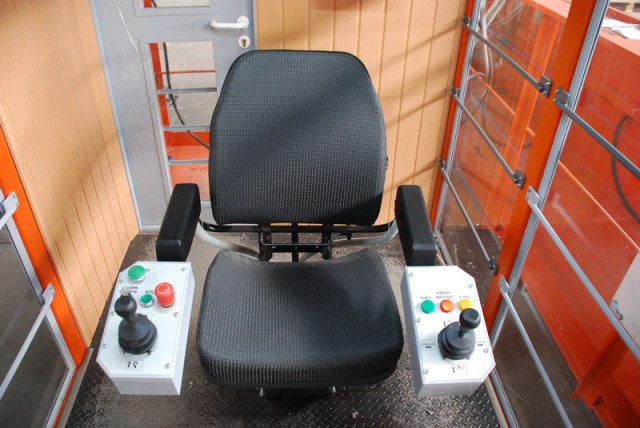
Tower crane operator
Walkways and service platforms:
The walkways and service platforms that are located more than 2 m above the ground must be metallic and non-slip; they must be equipped with a protective railing composed of the following elements:
- A normal handrail, located 1 m from the floor
- An intermediate balustrade 0.45 m from the floor
- A skirting board of 0.15 m height, or any other device that ensures at least equivalent protection.
In the case of using perforated non-slip plates, diamond or any other material that does not constitute a smooth surface, the perforations or interstices must not allow the passage of a sphere of 20 mm in diameter, and its section cannot be more than 400 mm 2.
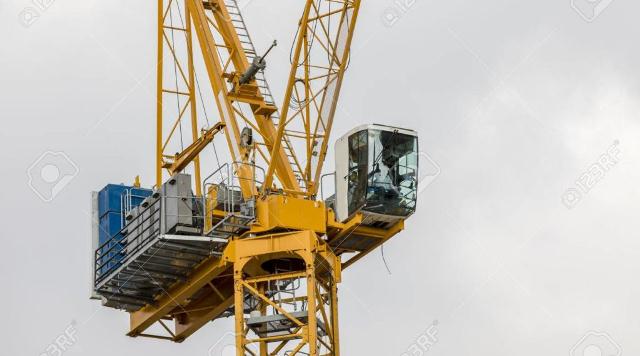
Indicators and informative signs
Tower cranes must be provided with an informative sign, 1 m wide and at least 1.5 m high, bolted to the most visible side of the central trunk and located at a height between 2 m and 3 m from the floor level of the tower. zero levels. The sign must provide, in Spanish language and legible and indelible characters, the following information:
- brand and model of tower crane
- The maximum length of the pen
- maximum peak load
- Maximum lifting load with its distance to the central axis of the crane
- any other information that the manufacturer deems necessary to provide
The pens should have signs indicating the maximum load to be lifted at each specific point; the dimensions should be 0.30 max 050 m and black characters should be used on a white background.
The signs must be located so that they do not exert opposition to the wind that could harm the operation of the boom and must be perfectly visible to the operator and the signalman.
Information in the cabin
In all the cranes of tower cranes, there must be an information plate that indicates, by means of easily visible and indelible characters, the load diagram of the crane, in units of the International System, SI.
It is not allowed to add any type of sign to those specified by the manufacturer or change the original dimension or location of these. Only propaganda signs can be made by covering the faces of the counterweights of the counterweight, as long as said signs do not surpass the surface of those and are firmly secured.
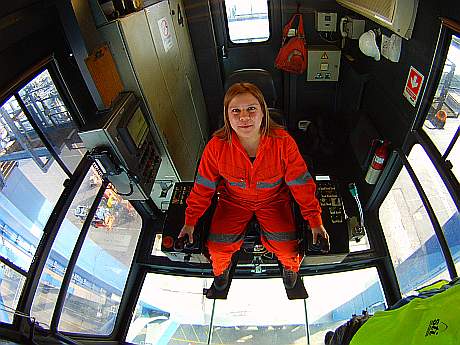
Crane Brake
Tower cranes must be equipped with brakes or other similar mechanisms, which are capable of stopping and maintaining the arrest in any position and circumstance, especially when there is a cut in the power supply.

Safety regulations for cranes
Involves people, property and property, that is why it is essential to comply with certain safety regulations related mainly to the automatic safety systems that the crane has, with the correct maintenance of its parts, with the conditions of operation in the workplace and with the staff that works with them.
The most common accidents are caused by imprudent actions or ignorance of the people involved in its assembly, maintenance or operation.
Crane inspection
It is essential to have a program of inspections and preventive maintenance plan very rigid because any accident that occurs can strongly affect the productivity of the works where these cranes are used.
It is recommended that the inspections be carried out periodically by the crane operator or a supervisor, before beginning the workday. These must be carried out exhaustively and oriented to find faults in the most visible elements.
Tower crane safety devices
Safety devices in cranes:
The safety in the handling of a tower crane depends both on its installation and maintenance conditions and on the good use or handling of the same.
The safety mechanisms of a crane must be periodically checked and kept in optimal conditions, this will be the only way to preserve both the life of people and the machine.
The safety mechanisms that a crane must have are of three types:
Tower crane wind speed limit
Effort limiter. Limiter of maximum torque or maximum moment:
The purpose of this mechanism is to limit the high load as a function of the distance and the translation of the carriage as a function of the load; therefore, when activated by excess load, it automatically blocks the lifting and advancing of the carriage in the boom, leaving the opposing movements naturally operative, that is, carriage backward and descents of the hook.
In many tower cranes, it is located at the right angle of the turret; in other models, it is located in the boom tensioner, and in the suspension cable.
The calibration of this limiter is done with the nominal load (depending on the crane), plus 10% or 5% on the tip of the boom and its regulation is given by an electrical functioning microswitch.
It is important to note that this 5% or 10% does not mean that it can lift more load as is normally believed, but it is only to calibrate the crane; this cut off compensates for the dynamic effect of the start of the lifting of a load, which temporarily exceeds the maximum load to hoist, designed and calculated by the manufacturer.
Otherwise, the maximum load that the crane can hoist could not be lifted; that is, it would lift less.
By no means, the operator and/or mechanic of work can alter this calibration.
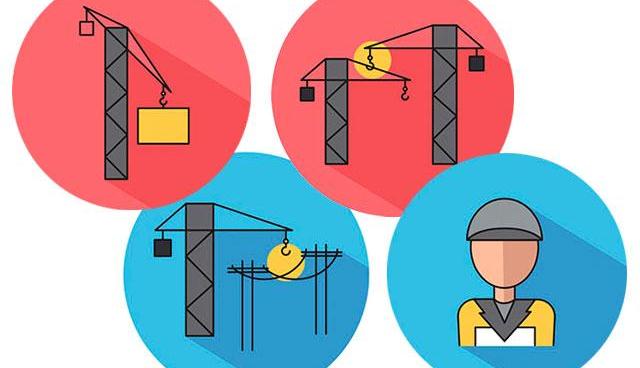
Maximum load limiter
The purpose of this safety device is to prevent the maximum load that has been calculated for the tower crane from being exceeded.
It acts directly on the lifting fork, due to the traction exerted by the cable, it limits, as in the previous case, the elevated load as a function of the distance and the translation of the trolley according to the load.
It is almost always located in the turret or in the pen; Its function is the same, it only changes its design
Speed limiter
Your mission is to stop the movement. It generally acts on the pull of the lifting cable and its function is to prevent the crane from lifting a load greater than that determined for a certain lifting speed.
The automatic locking system of the trolley: This mechanism acts on the trolley of loads and its function is to lock it before the eventuality that its traction cable is cut; With this system, any load is prevented from sliding towards the tip or towards the trunk of the crane.
Limitation of translation travel of the crane: This limiter is only applicable to rolling cranes and prevents it from leaving the track due to an operation error or accident. Stops the movement of the crane when it reaches the ends of the road.
Flagging system or weather vane
It acts directly on the brake of the rotary Gearmotor, unblocking it so that the boom is oriented with the wind, when it is out of service, in order to resist the least possible resistance to the wind.
That is, it allows the pen to be oriented to the position of the wind. Nowadays modern cranes are automatically oriented with winds greater than or equal to 72 km/hr.
Automatic speed selection
It is an automatic speed control system that allows the sequential change of speeds, from the lowest to the highest speed, both up and down.
Translational stops: It is a mechanical system that must be located at both ends of the road, and its function is to prevent the crane from leaving it, due to wind or accident.
Deadman system: In the event that the operator suffers an invalidating accident, all movements are stopped immediately because the commands automatically return to zero position.
Warning Limiters
Alarm horn: Indicates the start-up of the crane. It is commanded directly by the operator of the crane, in the respective command, and is very useful to warn personnel about the approximation of the load to the workplace.
It is important to note ad emás, which works automatically with the limiter of torque or maximum moment and with the maximum load limiter, warning the operator when the crane has been disconnected due to overload.
Tower Crane Cab
How much can tower cranes lift?
The maximum load that the crane can lift is 18 metric tons (39,690 pounds), but the crane cannot lift that much weight if the load is positioned at the end of the jib. The closer the load is positioned to the mast, the more weight the crane can lift safely. The 300 tonne-meter rating tells you the relationship.
The typical fee for installation and disassembly runs around $60,000. This price includes shipping the crane to the site, renting the mobile crane used to assemble the tower crane, the cost of the crew that handles the assembly, etc.
It is mainly used for lifting heavy things and transporting them to other places. A crane is a type of machine, generally equipped with a hoist rope, wire ropes or chains, and sheaves, that can be used both to lift and lower materials and to move them horizontally.
Basically, a tower crane has a large load on the OTHER SIDE of the crane. It keeps it balanced like a scale. On other tower cranes, they use cables that relay the force of the lifting to other parts of the crane near the ground, again, providing a counter force for the weight of the load it is lifting.
Incorrect ballast WILL cause a crane to fall over. The base of the crane is bolted into the ground and weighted down by giant blocks of concrete. The stiffness of the supporting structure also helps counteract bending caused by unbalanced loads.
Because of oversize loads or mishaps during assembly. In general, mobile cranes tend to fall over because of overly heavy loads, while tower cranes usually collapse in the course of being assembled, taken apart, or extended.
Taisun holds the world record for “heaviest weight lifted by crane”, set in Yantai on April 18, 2008 and set at 20,133 metric tonnes (44,385,667.25 lb) by lifting a barge, ballasted with water.
In 2018, the Bureau of Labor Statistics indicated that the average, annual crane operator salary was $55,750. Experienced crane operators that are working on large-scale projects may make as much as $84,250.

Tower Crane Installation
Assembly and disassembly of a crane construction tower of buildings and housing, maneuvers, crane operator, transport, maintenance
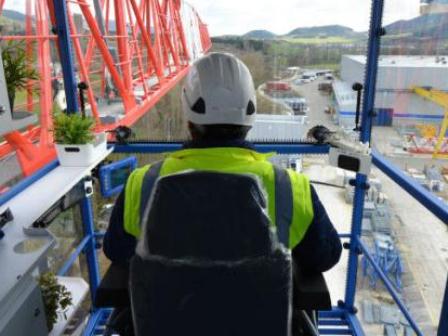
Tower crane Operator
Tower Crane Operator: tower crane operator job description, a day in the Life of a Tower Crane Operator, Crane and Tower Operators.
